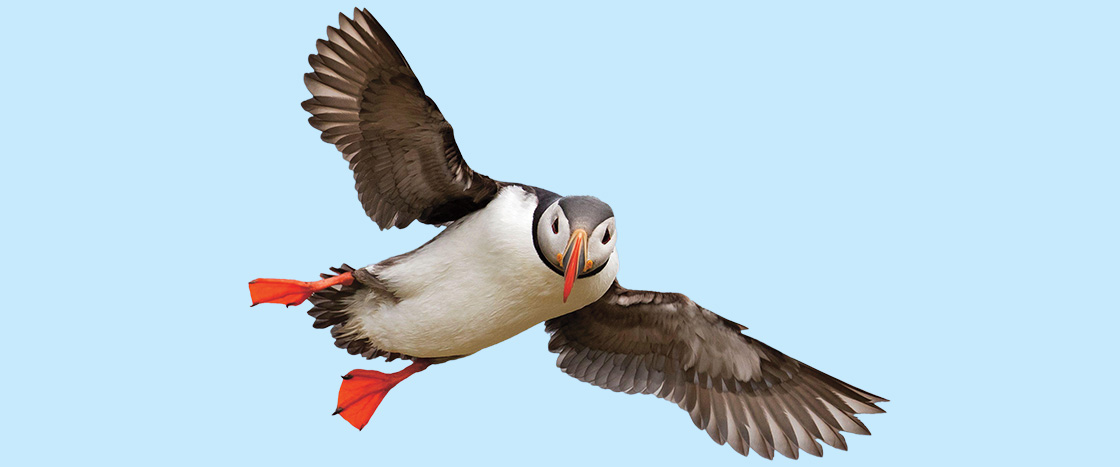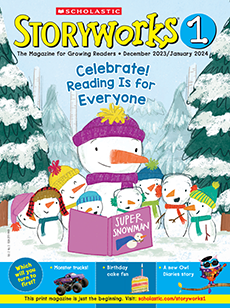They are birds that spend most of their time in the ocean. They can swim and fly. They live in cold waters.

What Is a Puffin?
These birds look a bit like penguins. But they are puffins. Find out more. Then read about a town that rescues them.
Learning Objective: Students will build background information about puffins to prepare for the Big Read-Aloud.
1. Puffins are seabirds.
2. They eat fish.
Puffins dive in the water to catch fish. They can hold 20 fish at a time in their beak!
3. Baby puffins are called pufflings.
They are not colorful like adult puffins. Pufflings are dark gray. They are small and fluffy.
4. Baby puffins hatch on cliffs.
Puffins make their nests on tall cliffs by the sea. That is where they have their babies. When the babies are old enough, they fly to the ocean.
Bye-bye, pufflings!
More About the Article
English Language Arts Focus
Key details
Science Focus
Animal behavior
Implementation
- Whole group
Pairings and Text Connections
- In this issue: “Big Read-Aloud: How to Save a Baby Puffin”
- Suggested books: Puffin by Martin Jenkins, Puffin Peter by Petr Horáček
Before-Reading Resources
- Vocabulary slideshow (5 minutes) seabirds, beaks, cliffs
Suggested Reading Focus
Build background knowledge (30 minutes)
- Activate children’s background knowledge by asking them if they know what a puffin is.
- Preview the article by pointing out the nonfiction text features. Ask students what they notice about the pictures.
- Read the article. Stop to check for comprehension with each of the bolded vocabulary words.
- Ask students to recall something they learned from the words or pictures in the article. Summarize their learning through discussion or on chart paper.
After-Reading Skills Practice
Skills: Research practice (15 minutes)
